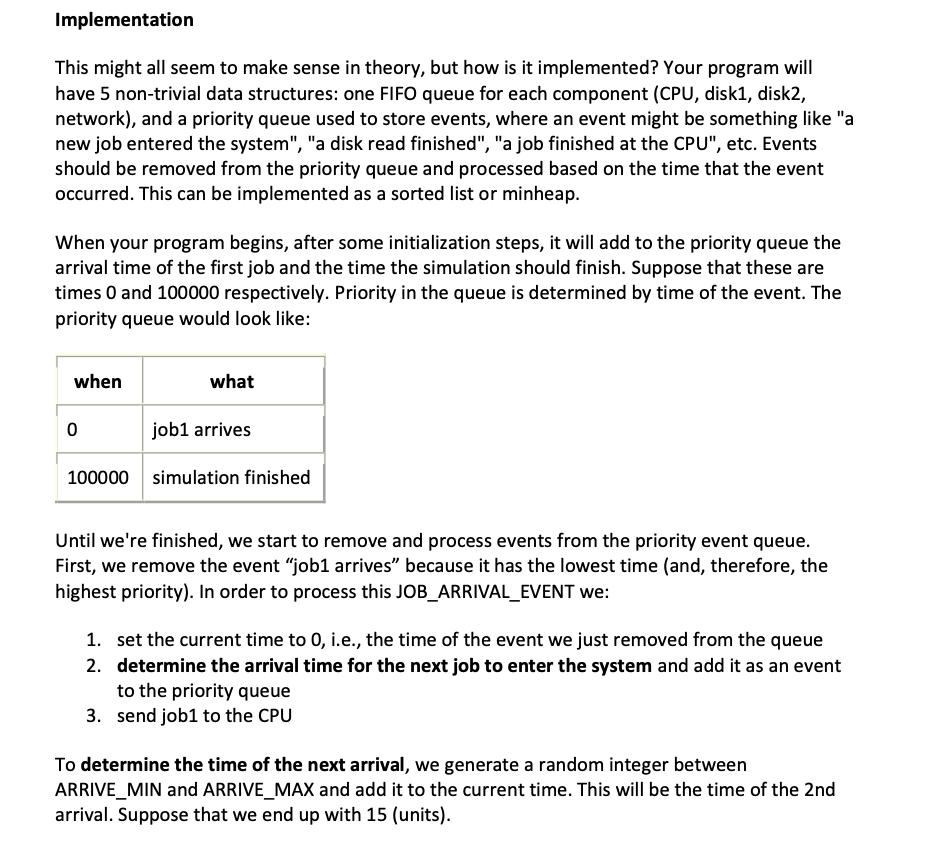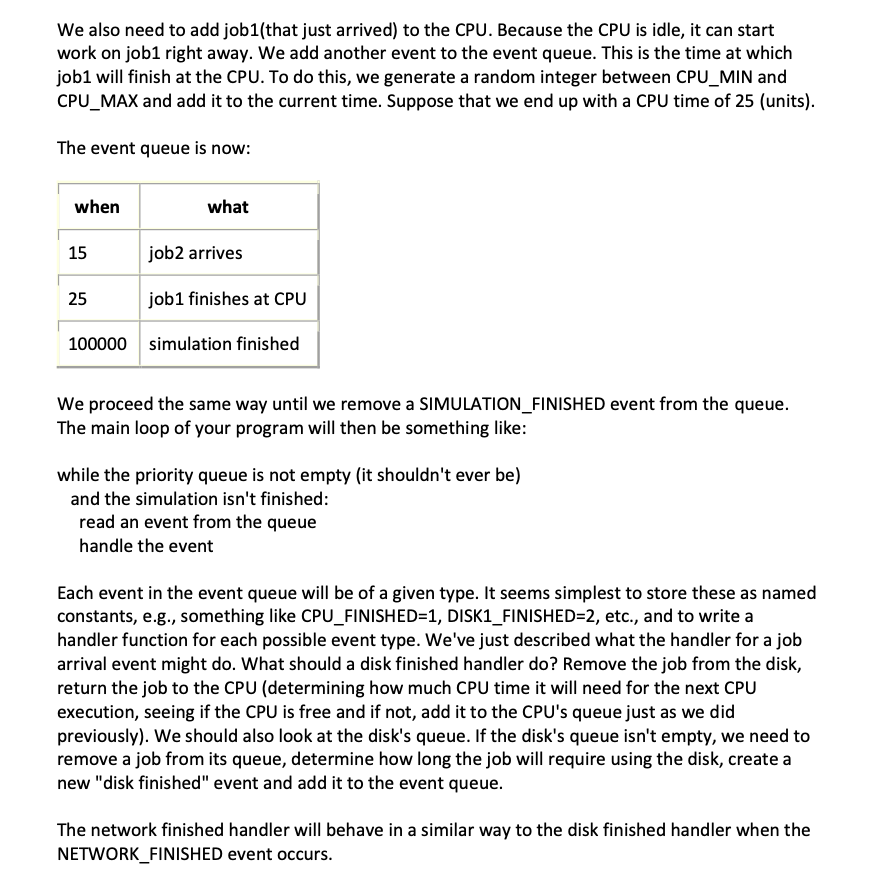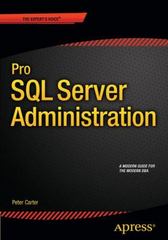Question
C++ please Write C++ Code. Thank you. In this assignment, you'll create a discrete event simulation in C++ that models the very simplified machine pictured
C++ please Write C++ Code. Thank you.
In this assignment, you'll create a discrete event simulation in C++ that models the very simplified machine pictured below. The diagram shows the flow of a process through the different states in its execution history. It also shows that a process must wait to use a resource if the resource is in use or busy.
When a job arrives (perhaps because a user double-clicked on an icon to start a program), it needs to spend some amount of time executing using the CPU. It then either performs I/O on one of two disks, or sends a message to the network and returns to use the CPU, or the job is finished. Jobs alternate between the CPU and I/O devices in this manner until they're finished. It's possible that when a job arrives to use a device, the device is busy servicing another program. In this case, the job must wait in a queue until the device is no longer busy. In this assignment, all of your device queues are FIFO, however, this is not necessarily the case in real systems. For this assignment, we'll frequently note or record the time; however, we'll use a "logical clock" and think of things in terms that sound like, "at time 37, job 6 spent 5 units of time at the CPU" rather than "at 2:30:01 PM, job 6 spent 300 microseconds at the CPU". In your simulation, the amount of time that a job spends using the CPU, whether or not it's finished (has more computing to do), which disk contains the file a job needs, or whether to use the network, and many other properties are determined at runtime, at random. To generate random numbers in C, take a look at the Standard C Library functions rand( ) and srand( ) (so that your program doesn't use the same pseudo-random numbers in each run). Basic Mechanism The system behaves as follows: The system runs from INIT_TIME (usually 0) to FIN_TIME. Jobs enter the system with an interarrival time that is uniformly distributed between ARRIVE_MIN and ARRIVE_MAX. Once a job has finished a round of processing at the CPU, the probability that it exits the system (instead of doing a disk read or network send, and then further computation) is QUIT_PROB. Once a job has been determined to continue executing, a probability function is used to determine whether it will do disk I/O or use the network. This probability is NETWORK_PROB. When a job needs to do disk I/O, it uses the disk that's the least busy, i.e., the disk whose queue is the shortest. (This might seem a bit silly, but we can pretend that each disk has the same information.) If the disk queues are of equal length, choose one of the disks at random. When jobs reach some component (CPU, disk1, disk2, or network), if that component is free, the job begins service there immediately. If, on the other hand, that component is busy servicing someone else, the job must wait in that component's queue. The queue for each system component is FIFO. When a job reaches a component (a different job leaves a component or the component is free, and this job is first in the queue), how much time does it spend using the component? This is determined randomly, at runtime, for every component arrival. A job is serviced by a component for an interval of time that is uniformly distributed between some minimum and maximum defined for that component. For example, you'll define: CPU_MIN, CPU_MAX, DISK1_MIN, DISK1_MAX, etc. At time FIN_TIME, the job simulation terminates. We can ignore the jobs that might be left receiving service or waiting in queue when FIN_TIME is reached.
Running Your Simulator The program will read from a text config file the following values: a SEED for the random number generator INIT_TIME FIN_TIME ARRIVE_MIN ARRIVE_MAX QUIT_PROB NETWORK_PROB CPU_MIN CPU_MAX DISK1_MIN DISK1_MAX DISK2_MIN DISK2_MAX NETWORK_MIN NETWORK_MAX The format of the file is up to you, but it could be something as simple as: INIT_TIME 0 FIN_TIME 10000 ... Results log Your program should write to a log file the values of each of the constants listed above as well as each significant event (e.g., arrival of a new job into the system, the completion of a job at a component, the termination of the simulation, along with the time of the event) statistics Calculate and print: The average and the maximum size of each queue. The utilization of each server (component). This would be: time_the_server_is_busy/total_time where total_time = FIN_TIME-INIT_TIME. The average and maximum response time of each server (response time will be the difference in time between the job arrival at a server and the completion of the job at the server) The throughput (number of jobs completed per unit of time) of each server. Run the program a number of times with different values for the parameters and random seed. Examine how the utilizations relate to queue sizes. If for a given choice of parameters by changing the random seed we obtain utilization and size values that are stable (i.e., they do don't change much (maybe 10%)), then we have a good simulation.
Your program should process a reasonable number of jobs, at least one thousand. As part of the homework submit a document, README.txt, from two to three double-spaced pages plus (maybe include) diagrams, describing your program. Your description should be written, as addressed to a technical manager whom you want to understand what you have done, the alternatives that you had to choose in design, why you made the choices you made, and how you tested your program. Include also a second document, RUNS.txt, describing the data you have used to test your program and what you have learned from executing and testing. You should choose reasonable values for the inter-arrival times and for the CPU service times. For simplicity, choose a QUIT_PROB defaulted to 0.2, and use a service time at the disks equal to the service time of real disks (i.e., what is the average time to access and read or write a block of disk?). You can use a value of 0.3 for NETWORK_PROB, indicating that 70% of the time a job leaving the CPU will do disk I/O and 30% of the time the task will perform a network send. If you can, determine what is the smallest reasonable inter-arrival time (and for that matter, how would we even go about deciding on what reasonable would be)?


Step by Step Solution
There are 3 Steps involved in it
Step: 1

Get Instant Access to Expert-Tailored Solutions
See step-by-step solutions with expert insights and AI powered tools for academic success
Step: 2

Step: 3

Ace Your Homework with AI
Get the answers you need in no time with our AI-driven, step-by-step assistance
Get Started


